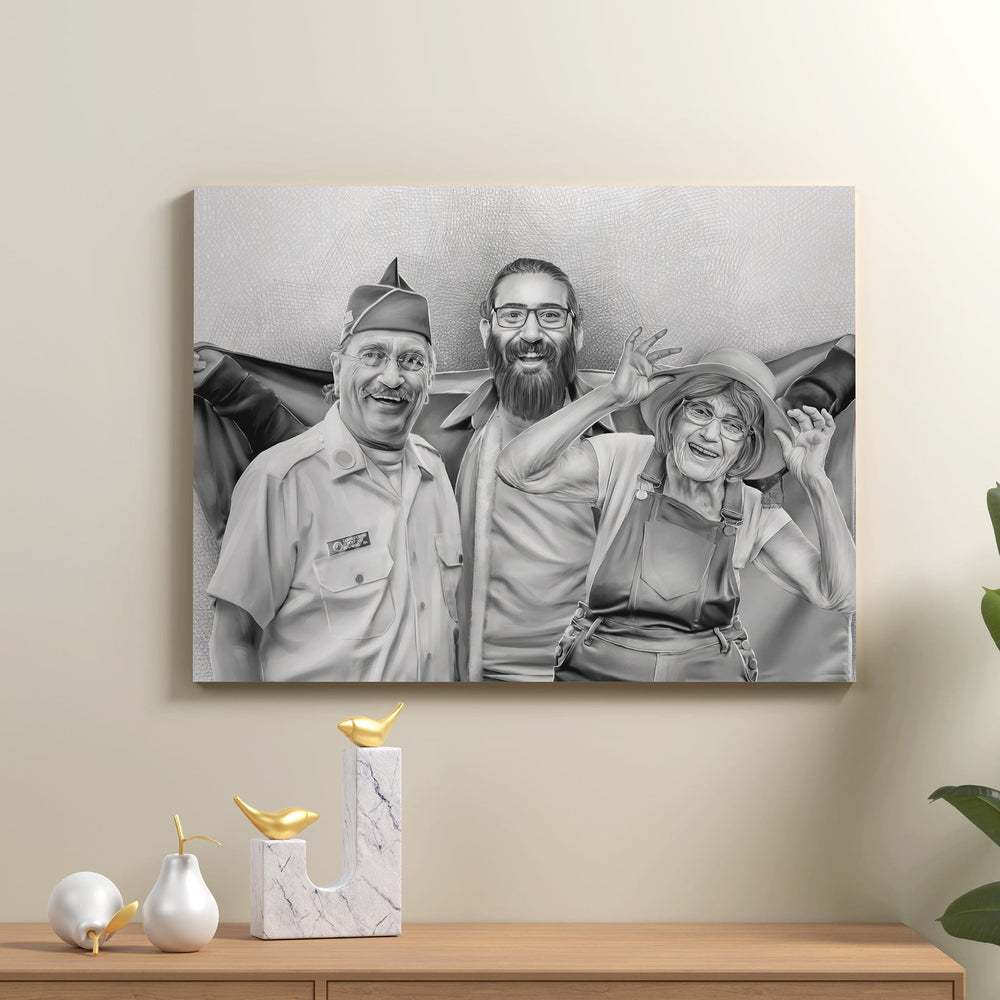Watercolor vs Oil Painting: Which Is More Beginner-Friendly

Art can be a great way to express yourself and create something beautiful. Choosing between two of the most popular painting mediums, watercolor and oil paints, can be tricky but rewarding.
Whether you're just starting or you have been painting for years, understanding the differences between these two types of paints will help you achieve the exact kind of artwork you want.
What is watercolor painting?

Order Watercolor Painting Here
Watercolor painting is an art form in which a brush and water-based pigments are used to create vibrant, vivid paintings. This technique is typically done on paper or fabric, as the pigments quickly dissolve in water and lose their intensity. Watercolor paintings can be realistic or abstract, often featuring delicate layers of color that create beautiful gradients. This painting style's challenge is mastering the subtle effects of water and light.
What is oil painting?
Oil painting is a popular style that uses oil paints, usually composed of dry pigments in linseed or walnut oil. This painting is typically done on canvas, wood, or other materials and offers painters many advantages. With oil paints, you can layer colors, blend hues more easily than acrylics or watercolors, and create brilliant textures that highlight the subject matter.
Differences Between Watercolor and Oil Painting
Whether you’re just starting out in art or are a seasoned painter, understanding the contrasts between watercolor and oil painting is key to successful artwork creation.
Medium
Oil paints often offer richer tones, a higher level of saturation, and the ability to mix more complex shades. Unlike watercolors, oil paint allows for more controlled blending, allowing artists to create smoother gradients with small details.
Oil paint also has a slower drying time than watercolors, allowing painters to correct mistakes before drying and create depth by layering colors over each other.
Support
Watercolor painting on paper is traditionally done on heavier stock made of cotton, rag, or wood pulp. Oil paintings are typically done on canvas or wood, prepared in advance with primers and grounds.
The canvas or wooden supports are used to provide a more resilient surface that can easily handle the heavier load of oil-based paints and allow them to stick better to the support during the drying process.
Blending and layering
When blending colors, oil paints offer a much more controlled and precise look than watercolors. Artists can easily blend colors on an oil painting with a brush or a palette knife for soft transitions and subtle details. Additionally, due to the slower drying time of oil paints, artists can layer colors over each other for more depth in their paintings.
On the other hand, watercolor paintings require more skill from the artist since they dry quickly and do not easily build up with additional layers as oil paints do. However, this type of paint can create stunning effects if used properly, as its unique characteristics allow for bright colors and simple blends.
Time to Dry
Watercolors dries much faster than oil paints due to their water-soluble nature. On average, a watercolor painting can be completed in a couple of hours or less, depending on the complexity of the image and the number of layers used by the artist. In contrast, an oil painting takes much longer to finish due to the slow-drying nature of its pigments and binders.
Corrections
Oil paints are much more forgiving than watercolors as they allow corrections to be made before the paint is completely dry, allowing artists to make small adjustments if needed. This makes oil painting advantageous for those still learning the painting techniques and who need to practice making corrections until they achieve their desired look.
How can you tell if a painting is a watercolor?
Paintings are usually identified by their texture, colors, and brush strokes. Watercolor paintings tend to have a light and fluid look due to the water-soluble nature of the paint and the thin layers that blend seamlessly. You can also identify watercolor paintings by their characteristic dry brush technique and vibrant colors, often made with transparent pigments blended in water.
Why do painters prefer oil paint?
Painters prefer oil paint for its ability to create thick and tactile brush strokes, allowing them to add various layers of color and texture. Oil paints also allow for blending between colors, creating a smoother look and finish than watercolors. Due to its slow drying time, oil paints allow painters to make corrections or adjustments before the paint has fully dried.
Which is harder: watercolor or oil painting?
Both watercolor and oil painting has unique challenges, making it difficult to say which one is harder overall. Watercolor painting often requires a lighter touch because it can spread quickly, whereas oil paints require more time and patience because of their slower drying time.
Get Quality Memorial Artwork from Memorialize Art
Memorialize Art’s unique and special memorial artwork is truly one-of-a-kind. All our pieces are original, handmade works that are crafted with patience, care, and attention to detail. Indeed, these creations are a great way to remember a loved one’s life and their memory of love, joy, and energy. So don’t hesitate; purchase your meaningful memorial art now from Memorialize Art and commemorate the precious memories of your beloved ones in style. Get quality memorial artwork from Memorialize Art today to share an inspiring tribute to the beauty of life!











